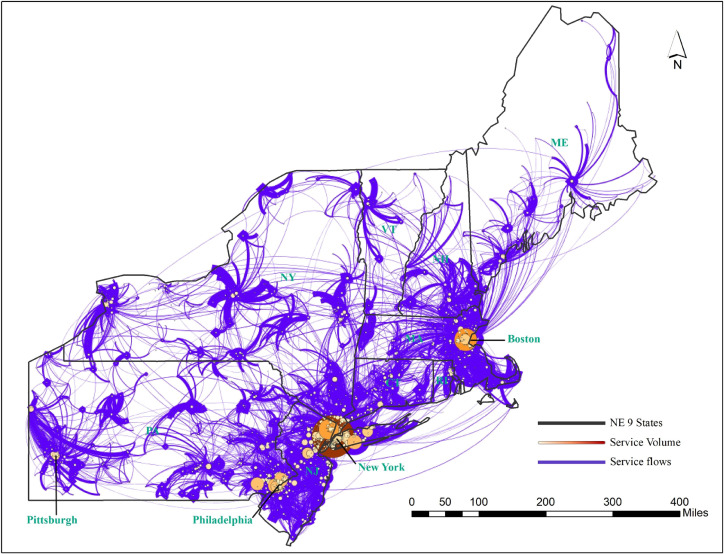
HU – Automated delineation of cancer service areas in northeast region of the United States: A network optimization approach
Fahui Wang, Changzhen Wang, Yujie Hu, Julie Weiss, Jennifer Alford-Teaster, and Tracy Onega
Article first published online: 06 MAR 2020 Spatial and Spatio-temporal Epidemiology
DOI: 10.1016/j.sste.2020.100338
ABSTRACT:
Objective
Derivation of service areas is an important methodology for evaluating healthcare variation, which can be refined to more robust, condition-specific, and empirically-based automated regions, using cancer service areas as an exemplar.
Data sources/study setting
Medicare claims (2014–2015) for the nine-state Northeast region were used to develop a ZIP-code-level origin-destination matrix for cancer services (surgery, chemotherapy, and radiation). This population-based study followed a utilization-based approach to delineate cancer service areas (CSAs) to develop and test an improved methodology for small area analyses.
Data collection/extraction methods
Using the cancer service origin-destination matrix, we estimated travel time between all ZIP-code pairs, and applied a community detection method to delineate CSAs, which were tested for localization, modularity, and compactness, and compared to existing service areas.
Principal findings
Delineating 17 CSAs in the Northeast yielded optimal parameters, with a mean localization index (LI) of 0.88 (min: 0.60, max: 0.98), compared to the 43 Hospital Referral Regions (HRR) in the region (mean LI: 0.68; min: 0.18, max: 0.97). Modularity and compactness were similarly improved for CSAs vs. HRRs.
Conclusions
Deriving cancer-specific service areas with an automated algorithm that uses empirical and network methods showed improved performance on geographic measures compared to more general, hospital-based service areas.
Read the full publication at Spatial and Spatio-temporal Epidemiology.